4.E: Structure and Function (Exercises)
- Page ID
- 59413
\( \newcommand{\vecs}[1]{\overset { \scriptstyle \rightharpoonup} {\mathbf{#1}} } \)
\( \newcommand{\vecd}[1]{\overset{-\!-\!\rightharpoonup}{\vphantom{a}\smash {#1}}} \)
\( \newcommand{\id}{\mathrm{id}}\) \( \newcommand{\Span}{\mathrm{span}}\)
( \newcommand{\kernel}{\mathrm{null}\,}\) \( \newcommand{\range}{\mathrm{range}\,}\)
\( \newcommand{\RealPart}{\mathrm{Re}}\) \( \newcommand{\ImaginaryPart}{\mathrm{Im}}\)
\( \newcommand{\Argument}{\mathrm{Arg}}\) \( \newcommand{\norm}[1]{\| #1 \|}\)
\( \newcommand{\inner}[2]{\langle #1, #2 \rangle}\)
\( \newcommand{\Span}{\mathrm{span}}\)
\( \newcommand{\id}{\mathrm{id}}\)
\( \newcommand{\Span}{\mathrm{span}}\)
\( \newcommand{\kernel}{\mathrm{null}\,}\)
\( \newcommand{\range}{\mathrm{range}\,}\)
\( \newcommand{\RealPart}{\mathrm{Re}}\)
\( \newcommand{\ImaginaryPart}{\mathrm{Im}}\)
\( \newcommand{\Argument}{\mathrm{Arg}}\)
\( \newcommand{\norm}[1]{\| #1 \|}\)
\( \newcommand{\inner}[2]{\langle #1, #2 \rangle}\)
\( \newcommand{\Span}{\mathrm{span}}\) \( \newcommand{\AA}{\unicode[.8,0]{x212B}}\)
\( \newcommand{\vectorA}[1]{\vec{#1}} % arrow\)
\( \newcommand{\vectorAt}[1]{\vec{\text{#1}}} % arrow\)
\( \newcommand{\vectorB}[1]{\overset { \scriptstyle \rightharpoonup} {\mathbf{#1}} } \)
\( \newcommand{\vectorC}[1]{\textbf{#1}} \)
\( \newcommand{\vectorD}[1]{\overrightarrow{#1}} \)
\( \newcommand{\vectorDt}[1]{\overrightarrow{\text{#1}}} \)
\( \newcommand{\vectE}[1]{\overset{-\!-\!\rightharpoonup}{\vphantom{a}\smash{\mathbf {#1}}}} \)
\( \newcommand{\vecs}[1]{\overset { \scriptstyle \rightharpoonup} {\mathbf{#1}} } \)
\( \newcommand{\vecd}[1]{\overset{-\!-\!\rightharpoonup}{\vphantom{a}\smash {#1}}} \)
\(\newcommand{\avec}{\mathbf a}\) \(\newcommand{\bvec}{\mathbf b}\) \(\newcommand{\cvec}{\mathbf c}\) \(\newcommand{\dvec}{\mathbf d}\) \(\newcommand{\dtil}{\widetilde{\mathbf d}}\) \(\newcommand{\evec}{\mathbf e}\) \(\newcommand{\fvec}{\mathbf f}\) \(\newcommand{\nvec}{\mathbf n}\) \(\newcommand{\pvec}{\mathbf p}\) \(\newcommand{\qvec}{\mathbf q}\) \(\newcommand{\svec}{\mathbf s}\) \(\newcommand{\tvec}{\mathbf t}\) \(\newcommand{\uvec}{\mathbf u}\) \(\newcommand{\vvec}{\mathbf v}\) \(\newcommand{\wvec}{\mathbf w}\) \(\newcommand{\xvec}{\mathbf x}\) \(\newcommand{\yvec}{\mathbf y}\) \(\newcommand{\zvec}{\mathbf z}\) \(\newcommand{\rvec}{\mathbf r}\) \(\newcommand{\mvec}{\mathbf m}\) \(\newcommand{\zerovec}{\mathbf 0}\) \(\newcommand{\onevec}{\mathbf 1}\) \(\newcommand{\real}{\mathbb R}\) \(\newcommand{\twovec}[2]{\left[\begin{array}{r}#1 \\ #2 \end{array}\right]}\) \(\newcommand{\ctwovec}[2]{\left[\begin{array}{c}#1 \\ #2 \end{array}\right]}\) \(\newcommand{\threevec}[3]{\left[\begin{array}{r}#1 \\ #2 \\ #3 \end{array}\right]}\) \(\newcommand{\cthreevec}[3]{\left[\begin{array}{c}#1 \\ #2 \\ #3 \end{array}\right]}\) \(\newcommand{\fourvec}[4]{\left[\begin{array}{r}#1 \\ #2 \\ #3 \\ #4 \end{array}\right]}\) \(\newcommand{\cfourvec}[4]{\left[\begin{array}{c}#1 \\ #2 \\ #3 \\ #4 \end{array}\right]}\) \(\newcommand{\fivevec}[5]{\left[\begin{array}{r}#1 \\ #2 \\ #3 \\ #4 \\ #5 \\ \end{array}\right]}\) \(\newcommand{\cfivevec}[5]{\left[\begin{array}{c}#1 \\ #2 \\ #3 \\ #4 \\ #5 \\ \end{array}\right]}\) \(\newcommand{\mattwo}[4]{\left[\begin{array}{rr}#1 \amp #2 \\ #3 \amp #4 \\ \end{array}\right]}\) \(\newcommand{\laspan}[1]{\text{Span}\{#1\}}\) \(\newcommand{\bcal}{\cal B}\) \(\newcommand{\ccal}{\cal C}\) \(\newcommand{\scal}{\cal S}\) \(\newcommand{\wcal}{\cal W}\) \(\newcommand{\ecal}{\cal E}\) \(\newcommand{\coords}[2]{\left\{#1\right\}_{#2}}\) \(\newcommand{\gray}[1]{\color{gray}{#1}}\) \(\newcommand{\lgray}[1]{\color{lightgray}{#1}}\) \(\newcommand{\rank}{\operatorname{rank}}\) \(\newcommand{\row}{\text{Row}}\) \(\newcommand{\col}{\text{Col}}\) \(\renewcommand{\row}{\text{Row}}\) \(\newcommand{\nul}{\text{Nul}}\) \(\newcommand{\var}{\text{Var}}\) \(\newcommand{\corr}{\text{corr}}\) \(\newcommand{\len}[1]{\left|#1\right|}\) \(\newcommand{\bbar}{\overline{\bvec}}\) \(\newcommand{\bhat}{\widehat{\bvec}}\) \(\newcommand{\bperp}{\bvec^\perp}\) \(\newcommand{\xhat}{\widehat{\xvec}}\) \(\newcommand{\vhat}{\widehat{\vvec}}\) \(\newcommand{\uhat}{\widehat{\uvec}}\) \(\newcommand{\what}{\widehat{\wvec}}\) \(\newcommand{\Sighat}{\widehat{\Sigma}}\) \(\newcommand{\lt}{<}\) \(\newcommand{\gt}{>}\) \(\newcommand{\amp}{&}\) \(\definecolor{fillinmathshade}{gray}{0.9}\)These are homework exercises to accompany Chapter 4 of the University of Kentucky's LibreText for CHE 103 - Chemistry for Allied Health. Solutions are available below the questions.
Questions
(Click here for solutions)
Q4.1.1
Describe a Lewis structure.
Q4.1.2
How many bonds are usually formed by each element?
- sulfur
- hydrogen
- nitrogen
- phosphorus
Q4.1.3
How many bonds does oxygen tend to form? What combinations of bonds (single, double, triple) can it have?
Q4.1.4
How many bonds does carbon tend to form? What combinations of bonds (single, double, triple) can it have?
Q4.1.5
Using Table 4.1.1, draw the Lewis structure for each molecule.
a. H2S
b. CCl4
c. PF3
d. C2H4
(click here for solutions)
Q4.2.1
Given one type of structure (Lewis, condensed, or skeletal), draw the other two.
| a. | CH3CH2CH3 |
| b. |  |
| c. |  |
| d. | CH3CHBrCH2CH2CHClCH3 |
| e. | CH2(OH)CH2CH2CH3 |
| f. |  |
| g. | .jpg?revision=1) |
(click here for solutions)
Q4.3.1
How does the presence of a lone pair affect the shape of the molecule?
Q4.3.2
What is the "ideal" bond angle in a tetrahedral (AB4) molecule? How does that change in trigonal pyramidal (AB3E)? Bent (AB2E2)?
Q4.3.3
What is the ideal bond angle for trigonal planar (AB3) molecules? What would be the expected bond angle for a bent (AB2E) molecule?
Q4.3.4
Determine the electron geometry for each of the following molecules.
| a. |  |
| b. | |
| c. | |
| d. | |
| e. | |
| f. |
(click here for solutions)
Q4.4.1
Circle and label the functional groups in each molecule. There may be more than one functional group in a molecule.
| a. | 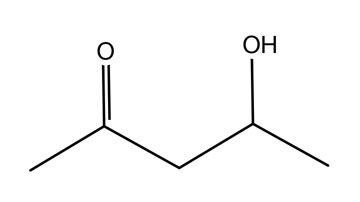 |
| b. |  |
| c. | |
| d. | |
| e. | |
| f. |
Q4.4.2
Draw a molecule which contains an ester, an alcohol, and an aldehyde.
Q4.4.3
Label each alcohol as primary, secondary, or tertiary.
| a. | |
| b. | |
| c. | |
| d. |
Q4.4.4
Label each amine as primary, secondary, or tertiary.
| a. | |
| b. | |
| c. | |
| d. | |
| e. |
Answers
4.1: Lewis Electron Dot Structures
Q4.1.1
A Lewis structure shows the connections between atoms (single, double, or triple bonds) as well as any non-bonding electrons.
Q4.1.2
- 2
- 1
- 3
- 3
Q4.1.3
2 bonds total; 2 single bonds or 1 double bond
Q4.1.4
4 bonds total; 4 single or 2 single and 1 double or 2 double or 1 single and 1 triple
Q4.1.5
| a. |  |
| b. |  |
| c. | 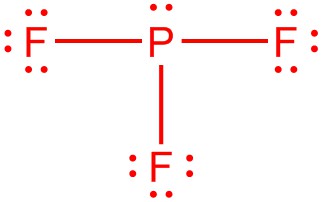 |
| d. |  |
4.2: Representing Structures
Q4.2.1
Given one type of structure (Lewis, condensed, or skeletal), draw the other two.
| Lewis Structure | Condensed Structure | Skeletal Structure | |
| a. | 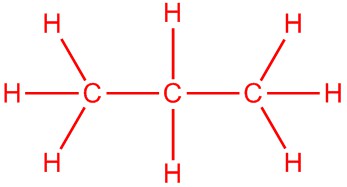 |
CH3CH2CH3 |  |
| b. |  |
CH3CH(OH)C(CH3)(OH)CH2CH3 |  |
| c. |  |
CH3C(O)CH3 |  |
| d. | 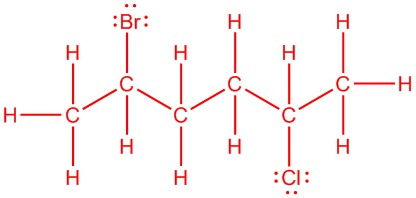 |
CH3CHBrCH2CH2CHClCH3 |  |
| e. |  |
CH2(OH)CH2CH2CH3 |  |
| f. |  |
CH3CH(CH3)CH2CH2CH3 |  |
| g. | 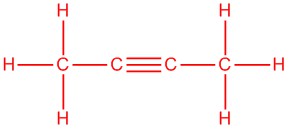 |
CH3CCCH3 | _xrl9.jpg?revision=1) |
4.3: Molecular Shapes
Q4.3.1
A lone pair causes the compression of other bond angles in the molecule.
Q4.3.2
AB4: 109.5°
AB3E: 107° (less than AB4)
AB2E2: 104.5° (less than AB3E)
Q4.3.3
AB3: 120°
AB2E: less than 120°
Q4.3.4
- trigonal planar
- linear
- tetrahedral
- linear
- trigonal planar
- tetrahedral
4.4: Functional Groups
Q4.4.1
| a. |  |
| b. |  |
| c. | 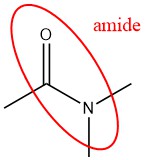 |
| d. |  |
| e. |  |
| f. |  |
Q4.4.2
Answers will vary. One example is shown.

Q4.4.3
- secondary
- primary
- secondary
- tertiary
Q4.4.4
- primary
- primary
- secondary
- tertiary
- secondary

